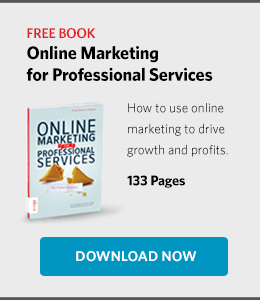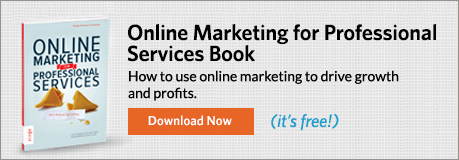Marketing Automation is more than just a new marketing buzzword and the current “shiny object” for marketers. When done well, marketing automation empowers marketers to drive revenue growth by delivering highly qualified prospects to the business development team. Marketing automation tools allow marketers to clone themselves to do the small, repetitive work that most marketers just don’t have the time to do, yet wish they could attend to personally.
For a baseline, let’s define marketing automation — the technology marketers use to automate repetitive tasks and effectively integrate multiple marketing channels. The term “marketing automation” describes itself in that it automates marketing tasks. Well known marketing automation platforms (MAPs) you’ve probably heard of include: Pardot, InfusionSoft, HubSpot, and Marketo.
You’ve probably experienced marketing automation and didn’t realize it. When you register for a webinar and the website magically sends you a confirmation email and also reminds you the day before and an hour before the start time — that is all marketing automation. Also, the email that follows up after the webinar requesting feedback or offering you more content is also marketing automation.
Although marketing automation sounds simple to comprehend, until you dig in and start utilizing it, it can be hard to understand the full extent of the power of it. Also, because it is still a relatively new technology for marketers, the industry is full of numerous misnomers and myths about it. Let me dispel 12 of those marketing automation myths:
1. Marketing automation tools are too expensive. While some enterprise-level tools like Marketo and Pardot may cost over $1,000 a month, the industry has evolved with numerous entry level options like Drip and Automizy that start at just $50 a month.
2. Marketing automation tools are all glitz with little to no ROI. Marketing automation doesn’t work unless you make it work, so you need to put in some effort. MAPs will automate redundant tasks like following up with leads that download a guide or sign up for a webinar, thus saving marketers time. It also automatically nurtures prospects until they are qualified and ready to buy, which shortens the sales cycle and decreases the amount of time a business developer spends with each prospect. Time equals money, and that is an ROI. (Wait, there is more, too, but I don't want to spoil the rest of the myth busting.) According to a 2013 study by Focus Research, 75% of companies using marketing automation see an ROI within 12 months, and 44% of companies see a return in just 6 months.
3. Marketing automation tools are just too complicated. If you tried a MAP pre-2010, you might have a bad taste in your mouth because the systems were clunky and hard to use then. As the industry has matured, the systems have not only become more affordable (see #1), but also much more user-friendly while adding more robust features. Most marketing automation platforms also tie in multiple systems to make finding key metrics easier.

4. Marketing automation is just fancy email follow up sequences. This statement may have been true a few years ago. However, things have changed. Today, marketing automation responds to a prospects behavior and allows you to personalize an email message and trigger non-email events like having your business developer call a hot lead. Personalization is driving the ROI of these automation tools and generating six times higher revenue compared to generic emails (Experian Marketing Services, 2013 Email Market Study).
5. Automation tools just work online. You’ll be amazed what marketing automation can do, including sending personalized emails and connecting to prospects on LinkedIn. Some automation tools like InfusionSoft can automatically send a piece of direct mail as a postcard, white paper, invitation, or a “handwritten” note and brownies with Send Out Cards.
6. My prospective clients hate spam email and “big brother” websites. Mine too! Marketing automation is not spam or spying. Prospects must opt-in to be tracked, and you can only track their behaviors on your website. Tracking behaviors allows you to provide them more relevant content, not spam. Some MAPs allow you to adjust your CTAs (Calls to Action) based on a prospect’s behavior to go from “download a guide” to “call now to start.” Also, studies show us marketing automation drives 18 times more revenue than generic email blasts (Jupiter Research, The ROI of Email Relevance: Improving Campaign Results Through Targeting).
SEE ALSO: How to Create Irresistible Calls-to-Action
7. Marketing Automation tools are just for B2C brands, not B2B, professional services firms. Automation tools do not care if you’re selling consumers, businesses, or if you are selling to the government (B2G). These tools automate repetitive tasks that nurture your prospective client with relevant information to move from potential lead to qualified prospect to buyer. I find MAPs work better for B2B brands because they nurture relationships while many consumer brands push for emotional, impulsive one-time purchases with advertising.
8. My sales cycle is too complex and too long for marketing automation. You’re the perfect firm to use automation tools because you do not have time to stay engaged with every prospect and client. Let your MAP nurture a prospect until they are qualified so your business development team only gives time to qualified prospects that are ready to buy, freeing them up to take on more prospects or to maintain relationships with existing clients. CMOs can see a 20% increase in sales opportunities from nurtured leads versus non-nurtured leads. (Demand Gen Report)
9. Marketing automation tools are just fancy CRMs. Automation tools work with CRMs (Customer Relationship Management tools), but they are more than just a CRM. I find marketing automation tools do what I always wish CRMs did, like follow up with prospects, identify hot prospects, and give me insight into an individual prospect. Some MAPs like SharpSpring have a built-in CRM. However, SharpSpring and most others sync well with CRMs like SalesForce. In fact, SalesForce acquired ExactTarget in 2013, which already acquired Pardot in 2012.
10. Marketing automation is just a trendy fad. I do not suggest spending time and money on fads, and marketing automation is no passing fad. Many cite the start of marketing automation in 1999 with Eloqua and SilverPop, and InfusionSoft has been around since 2001. These systems have evolved over the last 15+ years as the web has matured. For comparison, many people thought Facebook was a fad when it started in 2004 or when Twitter started in 2006, yet nearly every company utilizes each even though they are five years newer than marketing automation. A more important stat: 74% of top-performing companies use automated lead nurturing. Among average or less-performing companies that use marketing automation, 2/3 fail to leverage the platform’s lead nurturing capabilities. (Gleanster, Nurture Marketing for the Overwhelmed Marketer, Mar 2013). I suggest you don’t get left behind on this one because your competitors are already utilizing these technologies.
11. Marketing automation is just not useful to me/my boss will never approve using it. You might not be saying this one anymore after reading my first 10 points. If you’re still on the fence, how’d you like to free up a few hours of your week, understand each one of your prospects and clients better to make working with them easier and potentially upsell or cross-sell them services they want, and be able to look at one dashboard with macro metrics from all your marketing channels while still seeing the micro details of a single email or single user’s behavior? That would be nice for any marketer and marketing automation tools provide that. For the boss to approve it: it is about nurturing leads into qualified buyers before engaging business developers (saving time), giving a better client experience, and being able to monitor everything easily and make incremental tweaks to improve performance based on key metrics to improve ROI continuously. Also, marketing automation makes sales more predictive, so you can better determine if you need to staff up or “shake some trees” in the next few months.
12. Marketing automation is too overwhelming to start. You have a point here, and I may have created this myth from this very post. Take it easy and start small with a simple email follow up sequence. When someone downloads a guide from your website, email them a .pdf of the guide immediately. Then, a week later, send them a follow-up email with more relevant content. Next, set up reminders for a webinar and a follow-up survey for something slightly more complex. Both of those are great uses for marketing automation. When you’re more comfortable, you can build more complex sequences with variables that respond to your prospect’s behaviors such as missing a webinar versus attending it. You just need to get started.
The takeaway from busting these myths is that marketing automation tools are for your B2B business, and they are more than just a fad or fancy CRM that costs too much. With automation tools, you can take your content marketing and thought leadership to the next level while automating your lead nurturing by sharing more relevant, desirable content.
Marketing automation can revolutionize your marketing and business development team’s efforts. The biggest justification to marketing automation’s ROI is that 90% of marketing automation users call it a success. I’m sure the remaining 10% bought the tools and never used them like the exercise bike people buy for a New Year's Resolution and it becomes a coat rack. The tools work if you use them.
Additional Resources
- Learn about the most effective online marketing strategies to generate leads in our Online Marketing for Professional Services book.
- Download a free copy of our SEO Guide for Professional Services to create an SEO plan to make your firm easily found online.
- Our Lead Generating Website Guide details how your firm can generate qualified leads with its website.
How Hinge Can Help
Hinge has developed a comprehensive plan, The Visible Firm℠ to address these issues and more. It is the leading marketing program for delivering greater visibility, growth, and profits. This customized program will identify the most practical offline and online marketing tools your firm will need to gain new clients and reach new heights.


